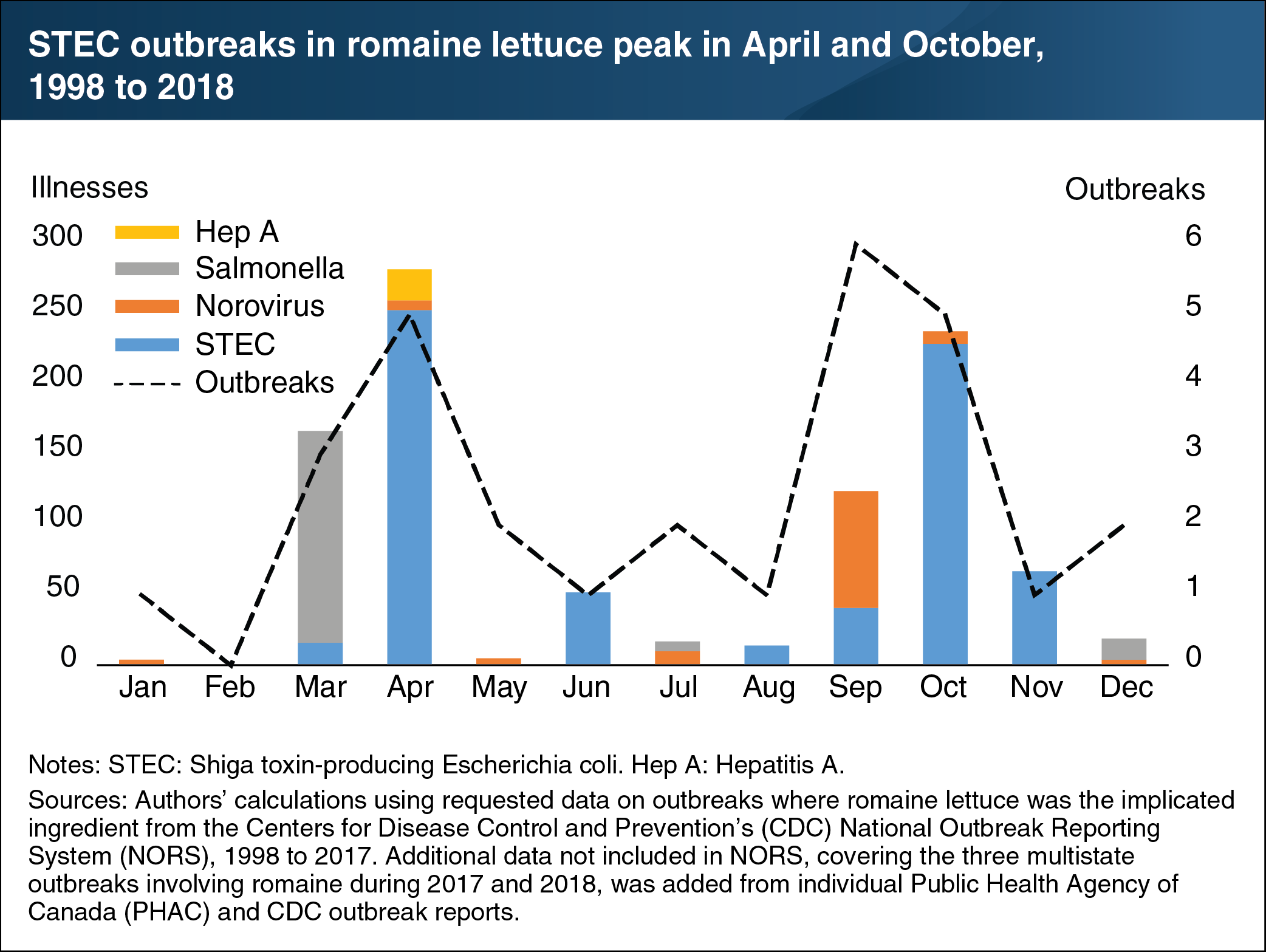STEC outbreaks in romaine lettuce peak in April and October, 1998 to 2018
- by Gregory Astill and Utpal Vasavada
- 12/2/2019

Leafy greens, including romaine lettuce, are the sixth most commonly consumed type of vegetable in the United States. About three-quarters of U.S. romaine shipments come from two regions, California’s Central Coast and Yuma, Arizona; the rest come from other areas in the United States, Mexico, and Canada. From May to November, about three-quarters of romaine lettuce shipments in the United States come from California’s Central Coast region, while from December to April, about three-quarters come from the Yuma, Arizona region. From 1998 to 2018, foodborne illnesses and outbreaks associated with romaine lettuce occurred most frequently during March, April, September, and October—the time of the season prior to shifts in regional production. In 2017 and 2018 there were three multi-state, multi-national foodborne illness outbreaks of Shiga toxin-producing Escherichia coli (STEC) O157:H7 associated with the consumption of romaine lettuce in the U.S. and Canada. These outbreaks led to a total of 376 illnesses, 158 hospitalizations, and 7 deaths. This chart appears in “Special Article: Seasonality in Romaine Outbreaks and Regional Shipments” in the Vegetables and Pulses Outlook newsletter, released in May 2019.

